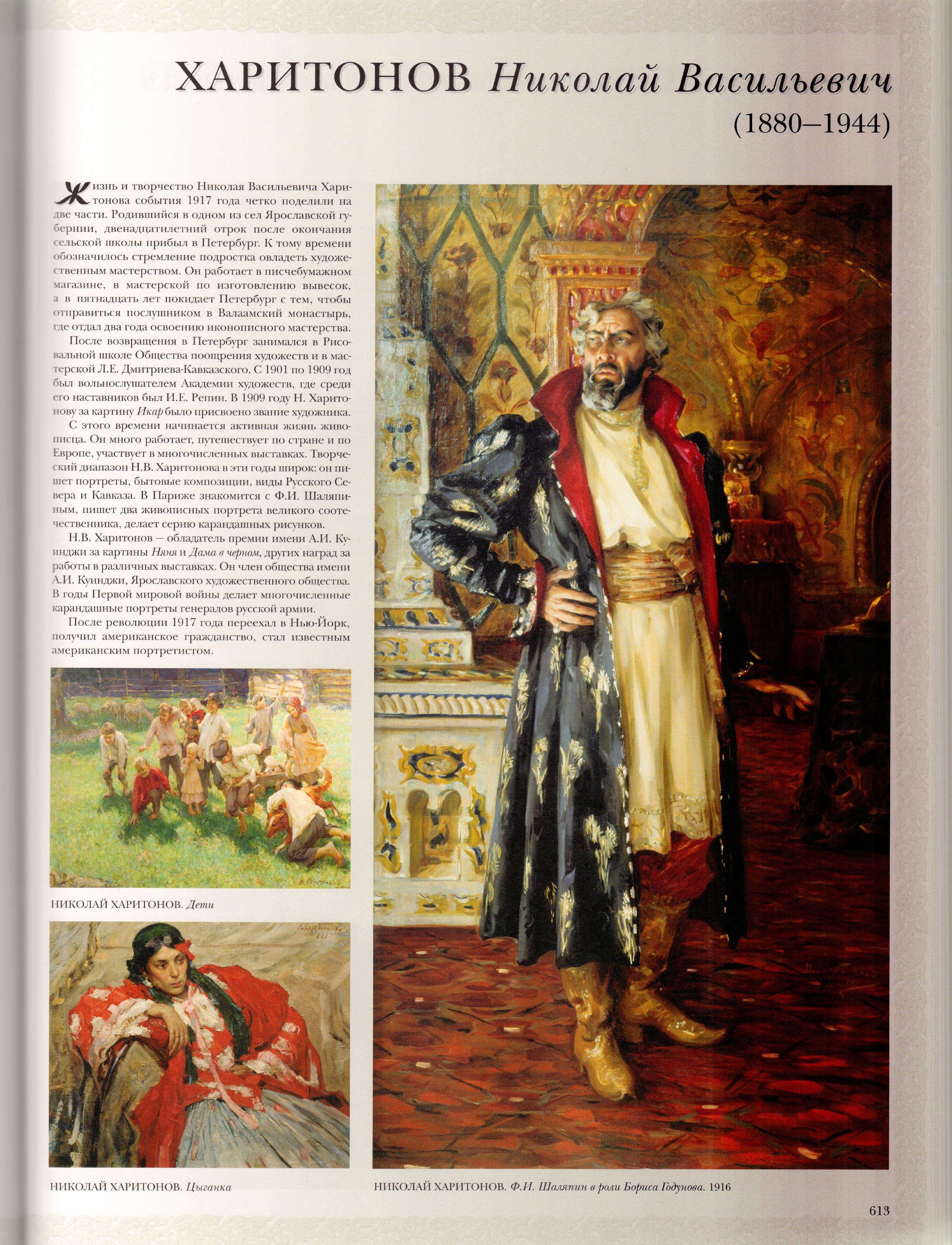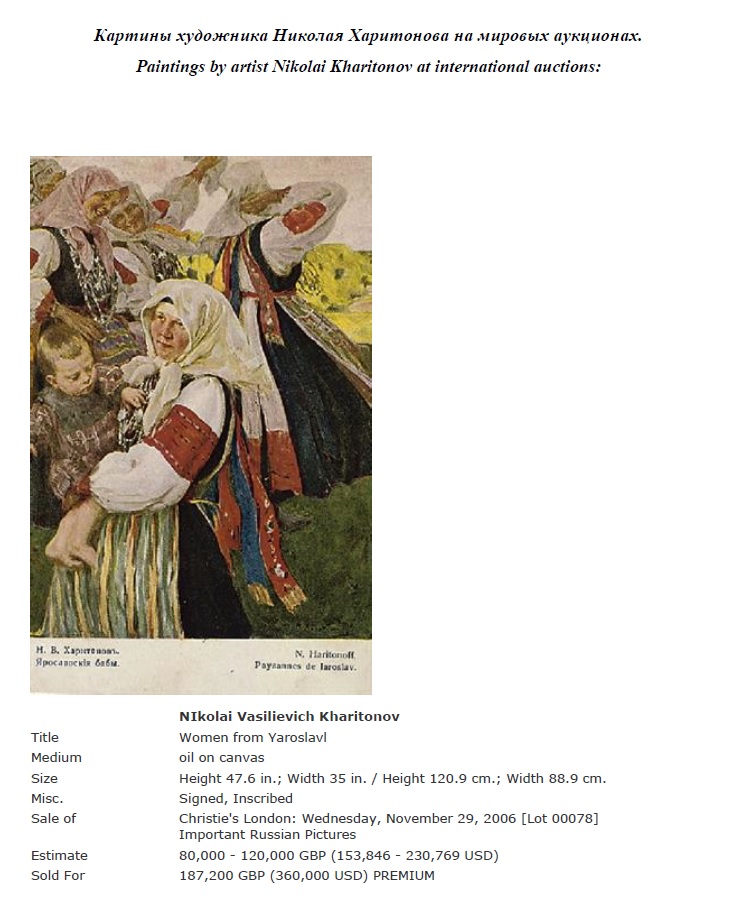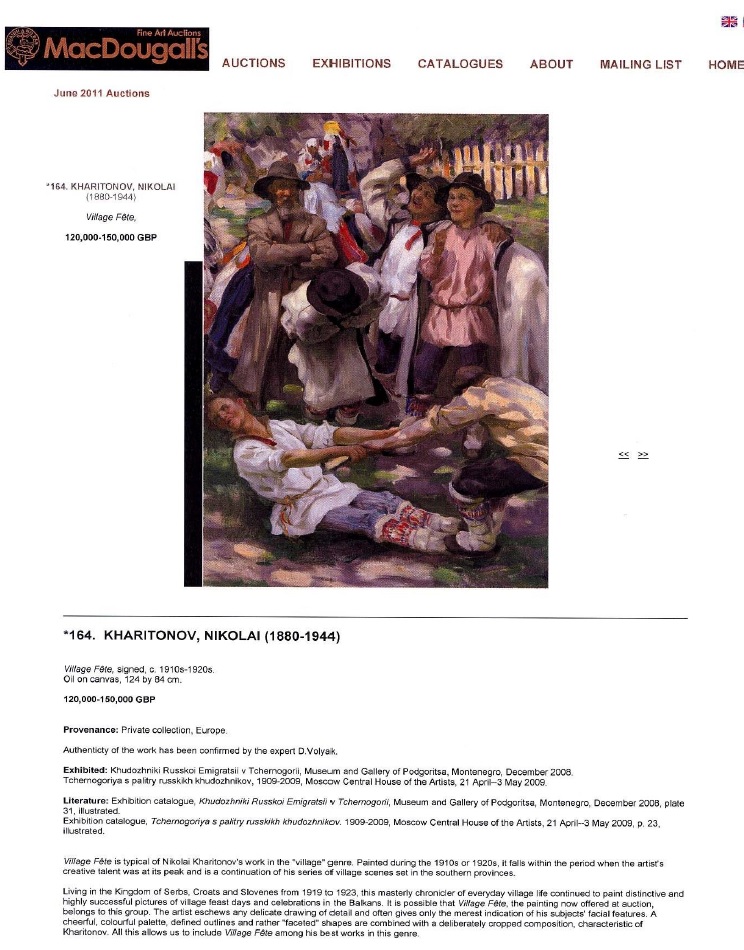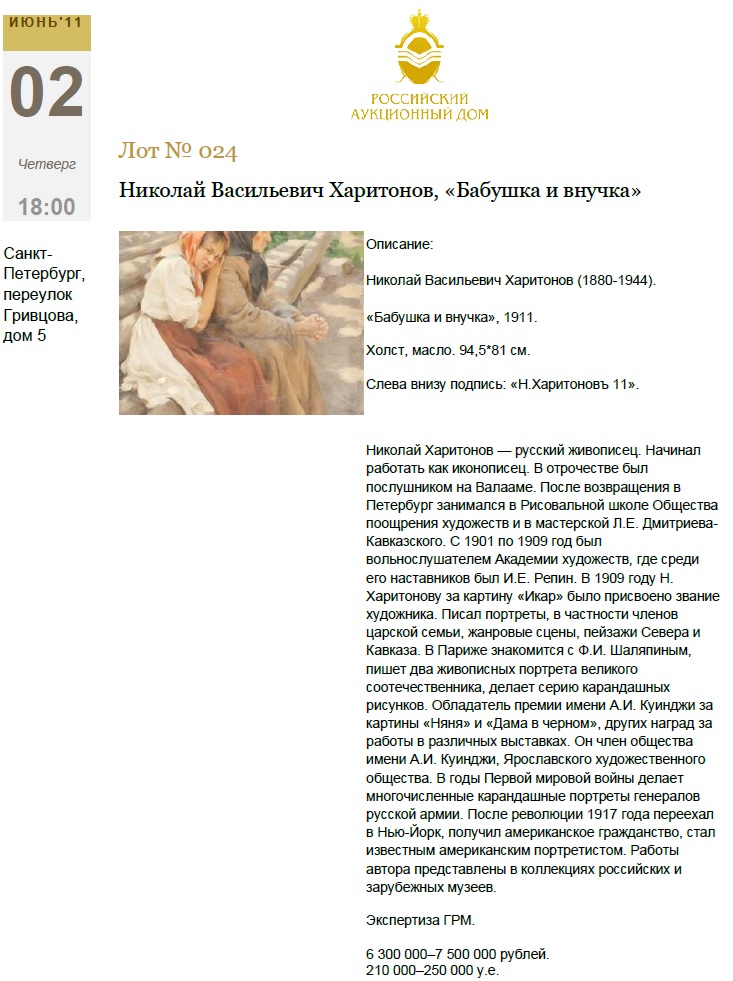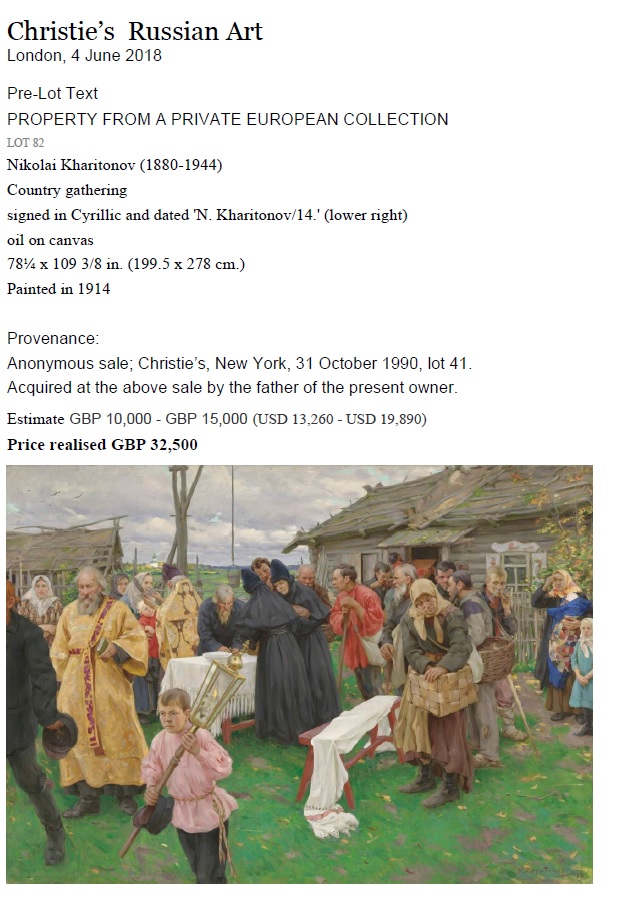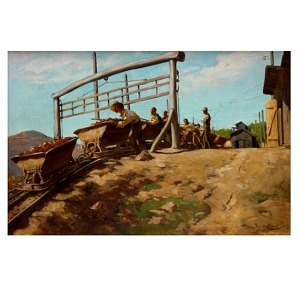Kharitonov Nikolai Vasilievich
27 November / 9 December 1880 (Yaroslavl Province) – 30 September 1944 (New York)
Painter
Kharitonov was born in a peasant family. After finishing rural school in Yaroslavl Province at the age of twelve, he moved to St. Petersburg where he started to work in stationery shop and later in a workshop which specialised in the production of signboards for stores. Around 1885 he became a novice in the monastery on the Valaam island. He painted icons there for two years. When he returned to St. Petersburg, he attended classes at the Drawing School of the Imperial Society for the Encouragement of the Arts and worked in the private art studio of L. E. Dmitriev-Kavkazsky.
In 1901 Kharitonov started to attend classes at the Higher Art School at the Academy of Arts, and in 1902 began training in the studio of I. E. Repin. In October 1909 he received the official title of an artist for the painting Icarus. He worked in St. Petersburg. He painted portraits and genre paintings, landscapes of Russian North and the Caucasus. He also painted portraits of the members of the Royal family.
Kharitonov exhibited his works at Spring Exhibitions at the Imperial Academy of Arts and at the 44th exhibition of the Society for Travelling Art Exhibitions (1916). He was awarded a Kuindzhi prize for the painting Nanny (1910), which was acquired by the Museum of Russian Academy of Arts and for the painting Lady in Black (1913) which was acquired by the Leipzig Museum at the International Exhibition in Munich. He received 1st prize from the Imperial Society of Encouragement of the Arts for the painting On the Swing (1911) as well as the prize named after the Princess Eugenia of Oldenburg for his painting Holiday in the Village (1914). He was a member of the Kuindzhi Society, the Community of Artists and the Yaroslavl Art Society. In 1912 he travelled around Europe, worked in Paris and Munich Academy of Arts.
During the WWI he was mobilised and he painted portraits of Russian generals which were commissioned by the Trophy Committee. In 1916 he painted two portraits and series of drawings of F. I. Shalyapin. He exhibited his works at the 1st exhibition of paintings, etudes and sketches of the Kuindzhi Society (1917), the 1st State Free Exhibition of Arts in Petrograd (1919) and at the Art Exhibition Lotus in Rostov-on-Don (1919).
In 1920 he emigrated to Kingdom of Serbs, Croats and Slovenes. He was a set designer at the Croatian People’s Theatre in Zagreb (opera Snow Maiden by N. A. Rimsky-Korsakov, 1921). In 1923 he moved to New York and received American citizenship. He worked as a portraitist.
Kharitonov’s paintings can be seen in State Russian Art Museum, Museum of the Academy of Arts, St. Petersburg, Theatre Museum named after Bakhrushin, Moscow, Krasnodar Regional Art Museum, in the museums of Yaroslavl and Dnepropetrovsk, Leipzig Museum, Germany, and others.




